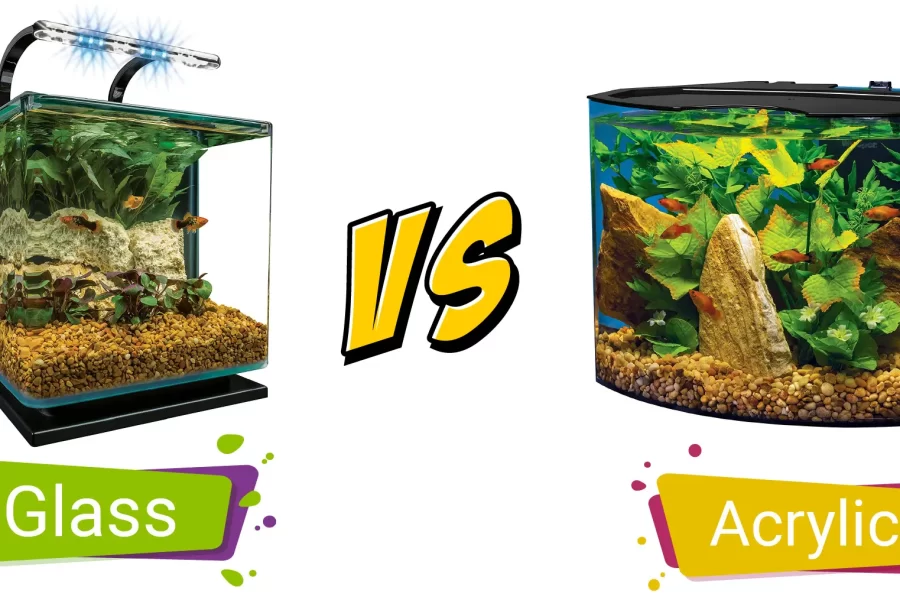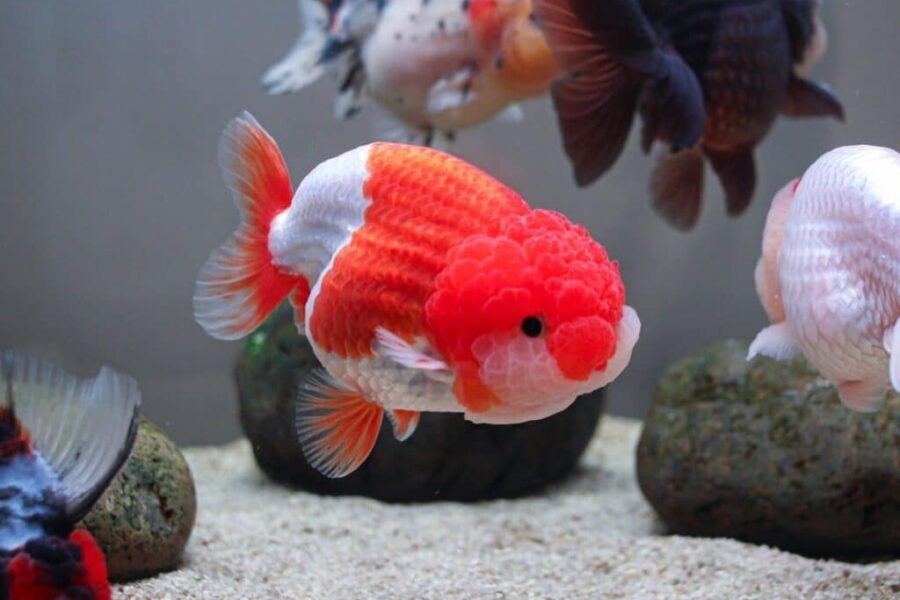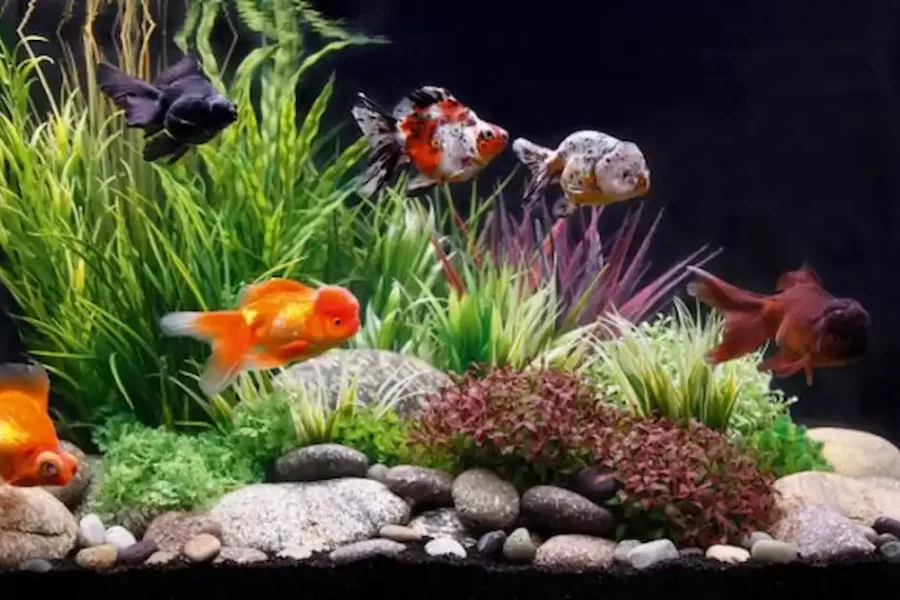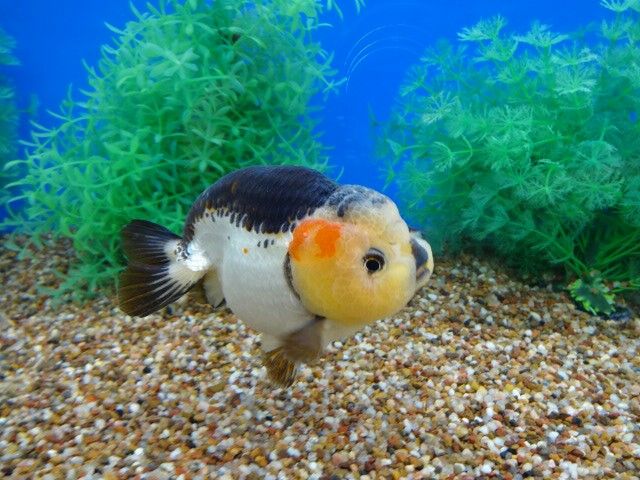
Tap Water Conditioner – sounds like something you’d use for a spa day, doesn’t it? But it’s actually a lifesaver for your goldfish! Ever wondered why your goldfish seems a little listless? It could be telling you, “Hey, I don’t like the water!”
In this guide, we’ll dive into the world of water conditioners, unmasking the top products that promise to turn your tap water from ‘meh’ to ‘yeah’ for your fishy friends. Sit back, grab your coffee (or fish food), and let’s sink into this aquatic topic. This isn’t just for the fish fanatics, but for anyone who wants their goldfish to live their best life. Ready to dip your toes in? Let’s make a splash!
Why Tap Water Conditioner?
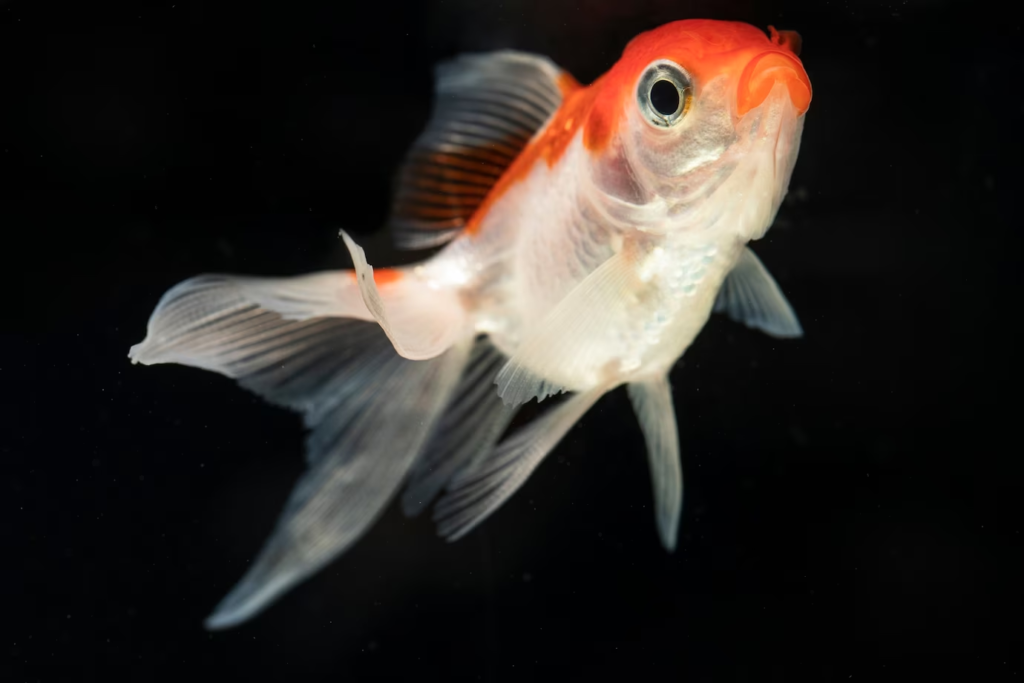
So, you’ve got a new goldfish, right? Now you’re probably thinking, “Why do I need a tap water conditioner?” Let’s dive right in.
Understanding the Importance of Tap Water Conditioners
Think of tap water conditioners as the super-heroes of your aquarium. They zap harmful chemicals lurking in your tap water. No surprises then, conditioners are an absolute must to keep your goldfish safe and healthy.
The Possible Dangers of Untreated Tap Water for Goldfish
Untreated tap water is like the supervillain to your superhero conditioner. “Why so?”, you question. Let me tell you. Most tap water contains disinfectants like chlorine, which are deadly for your goldfish. Fish out of water, anyone?
So, in short, don’t let untreated tap water be the villain in your goldfish’s life story. Now that we understand why conditioners are important let’s navigate the broad ocean of different types of conditioners and their pros and cons in the next section. Buckle your seatbelts, it’s about to get fascinating!
Types of Tap Water Conditioners
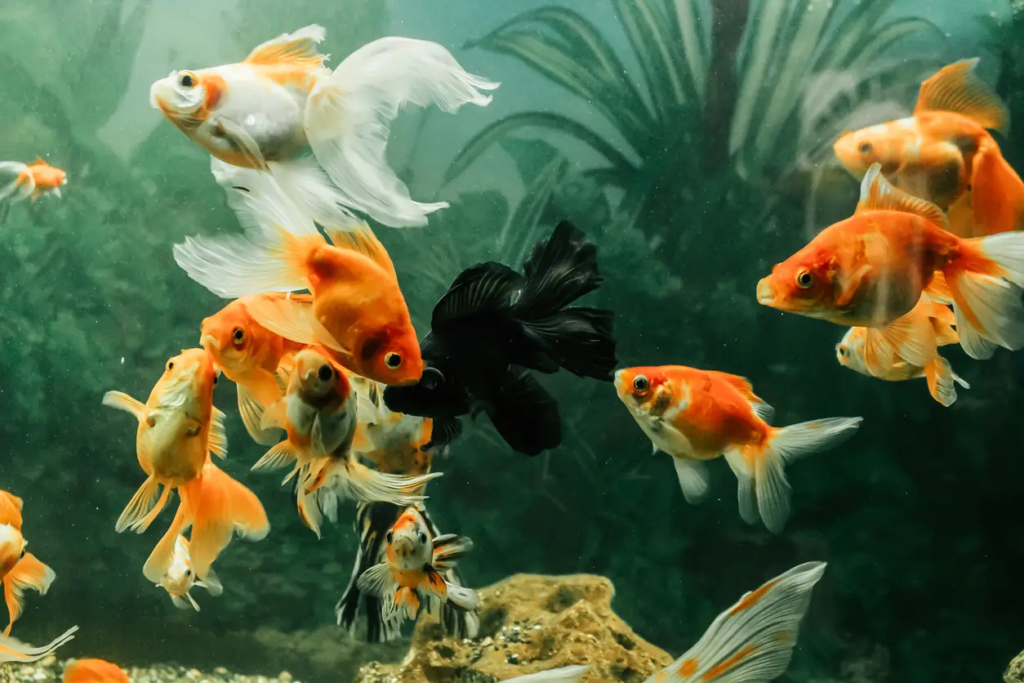
Alright folks! Let’s dive right in (pun intended), shall we? When it comes to tap water conditioners, we need variety! Because no two goldfish are exactly alike, right? Just like snowflakes.
Break Down of the Different Types
Basically, we have three major types of tap water conditioners, each with its own unique superpowers. First off, we got the chlorine removers- saving your goldfish from the villainous chlorine. Next up, chloramine removers- same job description, only they work on chloramines. Finally, we have the heavy metal detoxifiers. Their mission? Saving your goldfish from harmful metals. Exciting stuff, right? It’s like an underwater Marvel universe.
Discuss the Pros and Cons of Each Type
Now that we know the players let’s talk game strategy. Chlorine removers are great. They do the job well but they could be somewhat, ahem, one-dimensional. They’re like a fork at a dinner set; specific but limited.
Chloramine removers? They’re the fork AND knife – versatile enough to tackle both chlorine and chloramines. But let’s be real, you won’t be spreading butter with them.
Heavy metal detoxifiers are like the entire dinner set. They’ll handle everything from chlorine, chloramines to heavy metals. But beware; some might not be as effective as they claim. So, it’s crucial to pick a trusted brand.
With the types discussed, we’re ready to dive into the specifics of goldfish’s water needs. Get ready to become a water chemistry ace! Trust me, it’s not as boring as it sounds.
Understanding Goldfish Water Requirements

Doing a deep dive (pun intended) into the specific water requirements for goldfish can help keep your finned friends happy and healthy. Fluffy might love tap water, but your goldfish may not hold the same affection.
Overview of Goldfish’s Natural Habitat
Goldfish originated from East Asia where the water could be softer and more acidic compared to your tap water. This explains your goldfish’s cultural aversion to unconditioned tap water. Can be a bit fussy, aren’t they? Their preference is a clean, well-oxygenated environment free from any toxic elements, which is why tap water conditioner is important to mimic their natural habitat.
How pH, Temperature, and Other Factors Affect Goldfish Health
The pH levels, temperature, and presence of certain metals and chemicals can greatly affect your goldfish’s health. Scratching their heads or gasping at the surface could mean more than just a quirky habit – they might be begging for better water. A pH level of 7.0 to 8.0, alongside a temperature of about 65°F to 75°F, are the gold-standard conditions for your goldfish.
Ensuring optimal water conditions may seem like a lot of work. But relax, your tiny sea friend is not throwing diva tantrums! It’s just about maintaining proper conditions for a healthy life. And this is where the heroes of our story, the conditioners, come into play.
In the following section, we’ll dive into how to choose the right tap water conditioner for your goldfish. It will allow you to become the Michael Bay of aquariums – turning you from a hobbyist into a blockbuster aquarium superstar with a single product. Stay tuned, and let the adventure to clear waters begin!
Choosing The Best Conditioner

Choosing a tap water conditioner is like picking out the perfect pair of jeans. There’s a lot to consider and the right fit makes all the difference. In this section, we’ll dive into what factors you should consider when selecting the primo conditioner for your goldfish’s crib (the aquarium, of course!).
Factors to Consider When Selecting a Conditioner
Let’s get down to business. When selecting a conditioner, remember the A-B-C – Availability, Budget, and Complexion (okay, it’s a bit of a stretch, but just stick with me). Firstly, ensure the conditioner is easily available for you to buy, whether online or in a nearby store. Secondly, don’t let the price tag scare you. Pricey does not always mean better – your goldfish pretty much doesn’t care about fancy packaging. Lastly, the water complexion, or in other words, the water condition in your locality. Your tap water might contain certain elements that require a specific type of conditioner, so do your homework!
After considering these factors like a seasoned aquatic connoisseur, let’s delve into some top-rated conditioners that could potentially swoop in as the hero of the day for your dearest goldfish.
Review of Top-Rated Conditioners and Their Special Features
First up, we have the heavyweight-champ, API TAP WATER CONDITIONER. Known for packing a punch, this champ is suited to tackle heavy metals and other nasty things lurking in your tap water.
Next is the Natural Rapport Aquarium Water Conditioner, smoothly multitasking between removing toxins and adding beneficial electrolytes to the water. Imagine it sprinting around with a broom and a bottle of magic fish vitamins.
Let’s tip the hat to the sleek and smart Tetra Fish Tank Water Conditioner. Its secret superpower? Transforming tap water into the equivalent of a five-star hotel for your goldfish – safe, comfy, and stylish!
Oozing charm is the Fluval AquaPlus Water Conditioner, that ensures harmful substances in the water are knocked out while coating your little buddies with a protective layer of ‘fishy sunblock’.
Playing the cool superhero role with style, the Seachem Prime Fresh and Saltwater Conditioner, detoxifies the ammonia, nitrates, and nitrites. It’s the tap water’s James Bond, if you will.
Picking the suitable conditioner feels less like a chore and more like a fun shopping spree, right? Next up, we’re going to get you geared up on how to use your new conditioner properly. Buckle up!
How to Use Water Conditioners Properly
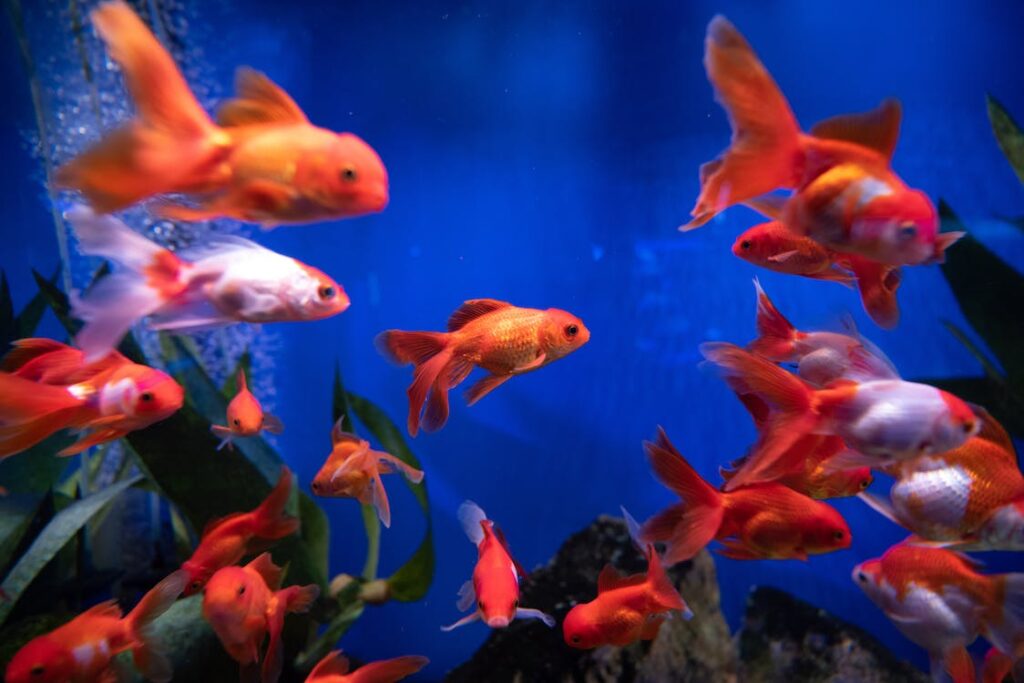
Let’s spill the tea on how to use water conditioners correctly. Because guess what? Your fish’s life depends on it.
Step-by-step Guide on Using Conditioners
Firstly, open that brand-new conditioner you’ve just bought and read the instructions (yes, it’s important!). As we all know, each product is a little different. Next, carefully measure the correct dosage indicated on the label. Don’t be a Goldilocks; we don’t want too little or too much. Pour the conditioner into a separate container filled with tap water (never pour directly into your aquarium). Stir it gently, and voila, you’ve got Goldfish-friendly H2O.
Advice on Avoiding Common Conditioning Mistakes
Now, let’s avoid some conditioner boo-boos. Don’t get overzealous and use more conditioner than recommended. Excessive use isn’t going to win you any gold stars; it’s just going to be a waste. Plus, remember to thoroughly mix the conditioner with the tap water before introducing your goldfish to the new environment.
Slapping on your next-level conditioner user badge yet? Good, because we are about to delve into some frequently asked questions that I bet are bouncing around in your head. This next section answers your deepest, darkest queries about tap water conditioners and will make sure you’re truly swimming in knowledge. So stick around, folks; the ride’s not over!
FAQs about Tap Water Conditioners

Alright, let’s pop open the can of worms. Or should I say, the can of fish? Either way, it’s time to dive deep into the most common questions and misconceptions in the fish owner’s universe.
Addressing Common Questions and Misconceptions
First things first, I often hear folks asking, “Is tap water really that bad for my goldfish?” Let me tell you, untreated tap water equals the Bermuda Triangle for your goldfish. It can be laden with chlorine and other chemicals, not exactly the tropical vacation your fish is hoping for.
Another one we frequently get is, “Can I just let my tap water sit for a week and then it’s good to go?” I wish it were that simple. The answer is no, not entirely. Letting it sit can, indeed, help chlorine gas out, but it doesn’t take care of chloramines or heavy metals.
Lastly, “Are all tap water conditioners created equal?” Nope, remember different conditioners have various ways they combat your tap water villains. Some are like the Superman of conditioners, taking on all types of foul tap water, while others might be more like your friendly neighborhood Spider-Man, doing a great job but only on specific problems.
Expert Tips on Maintaining Optimal Water Condition
Giving you all the pro secrets right here, don’t say I’ve never treated you. Tip numero uno: always check your aquarium’s water parameters regularly. It’s like your goldfish’s report card, tells you if you’ve been a good fish parent or not.
Secondly, take baby steps when changing or adding water to the aquarium. Patience is the name of the game here.
Lastly, variety is the spice of life, well, a goldfish’s life that is. Rotate your conditioner types regularly to prevent any resistance build-up in your aquatic pals.
Buckle up, because the grand finale is just around the bend! We will be ruminating on every fish owner’s favorite topic next. Not how to telepathically communicate with your goldfish, but how to optimally use water conditioners. So, stay tuned as we spill some knowledge on this bubbly enigma.
To Sum Up
In summary, the well-being of your goldfish largely depends on the quality of its aquatic environment – which brings us to the essence of using tap water conditioners. Untreated tap water might hold menacing threats to your pet, but the right conditioner can neutralize potentially harmful substances.
Each conditioner variety offers distinct benefits and drawbacks, and understanding these can help you make an informed choice. The best conditioner is one that closely replicates a goldfish’s natural habitat, maintaining optimal pH, temperature, and other critical factors. Careful usage of these conditioners, guided by expert advice, and faulty practices correction can result in a thriving goldfish. And with answers to conditioner-related FAQs at your fingertips, maintaining optimal water condition becomes a breeze.

